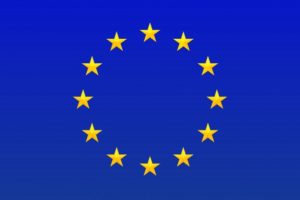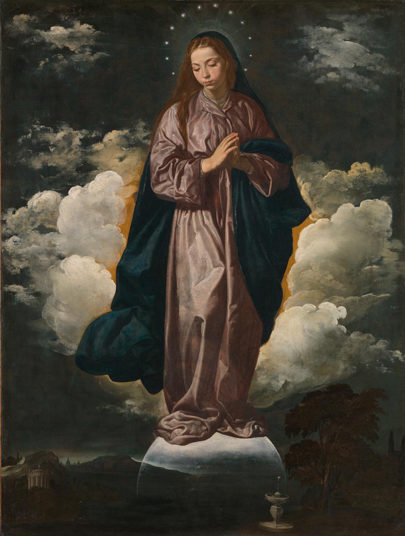For my swan-song I’ll supply the faithful with a tall tale of the sort that induced Mark to invite me on to his blog. I’m sure he would have enjoyed the mixture of verifiable truths, multiple ironies, and fuel for nested conspiracy theories.
Epi-prologue: the flag
 It’s a good symbol. The ring of stars evokes an ideal of common values and aspirations, as in Schiller’s Ode to Joy: “Űber Sternen muẞ er wohnen”. The empty space it defines but does not enclose invites states and citizens to fill it with the meaning and praxis they choose. Unlike the Ode, picked as the European anthem, it is not impossibly élitist for amateur use (*).
It’s a good symbol. The ring of stars evokes an ideal of common values and aspirations, as in Schiller’s Ode to Joy: “Űber Sternen muẞ er wohnen”. The empty space it defines but does not enclose invites states and citizens to fill it with the meaning and praxis they choose. Unlike the Ode, picked as the European anthem, it is not impossibly élitist for amateur use (*).
 The circle of stars is not standard heraldry. The one previous use I could find was the shortlived 13-star Betsy Ross flag of the American revolutionaries. This was replaced progressively by the rectangular arrangement of today, with one star for each state, as settled in 1818. There is no reason to think the Eurocrats were inspired by the Betsy Ross, or had even heard of it. So where did the 12-star European flag come from? It never corresponded to the number of members of any European institution at the times of adoption.
The circle of stars is not standard heraldry. The one previous use I could find was the shortlived 13-star Betsy Ross flag of the American revolutionaries. This was replaced progressively by the rectangular arrangement of today, with one star for each state, as settled in 1818. There is no reason to think the Eurocrats were inspired by the Betsy Ross, or had even heard of it. So where did the 12-star European flag come from? It never corresponded to the number of members of any European institution at the times of adoption.
I tell the story in reverse chronological order, like the detective explaining the murder to the assembled suspects in the drawing-room of the snowbound country house. In honour of Lewis Carroll, whose world we are plainly living in, the sections are called “fits”.
Fit the fourth: the Bureaucrats’ conspiracy
In 1985, the European Council – the heads of government of the member states of the European Union – adopted this emblem as the flag of the Union. It had been proposed by the European Parliament in 1983. As a symbol, it’s fine and has enjoyed popular success: the flag flies from many town halls along with the national flag and maybe the regional one, it’s on road signs at borders, and so on.
Politically, it was and remains a bit awkward. The emblem is the same one adopted in 1955 by my old employer, the Council of Europe (not to be confused with the European Council!), which holds any copyright there still is but does not enforce it with any zeal. The Council, an intergovernmental organisation based in Strasbourg, has always had more member states than the EU, so town halls in Turkey and Russia can fly it too if they feel like it. I assume the EU looked at alternative designs but could not find one good enough. The quality of the design beat out the desire for a unique identity.
Here’s Resolution (55) 32 (pdf) of the Committee of Ministers of the CoE adopting the flag, as proposed by its Consultative (now Parliamentary) Assembly, a body made up of national MPs.
Where’s the conspiracy? Merely that as far as I can make out, none of the Eurocrats bothered to consult the peoples of Europe. In 1955 this would have been technically difficult, but not in 1983 and 1985. New Zealand held two referenda in 2015-2016 on a proposal to replace the Union Jack-plus- Southern Cross with a rather nice silver-leaf fern, but it lost. The European construction has always been an élite project seeking popular legitimacy ex post. But then the same goes for nation-states and their flags.
So where did the stars come from? The Resolution includes this professional b/s:
Against the blue sky of the Western world, the stars symbolise the peoples of Europe in the form of a circle, the sign of union. The number of stars is invariably twelve, the figure twelve being the symbol of perfection and entirety.
That’s not how they got there.
Fit the third: the Catholic conspiracy
The lead in designing a flag was taken by the MPs. They set up a committee chaired by the exiled liberal Spanish writer/diplomat Salvador de Madariaga – a good choice - , and did in fact ask around for ideas. A humble Alsatian worker in the mailroom called Arsène Heitz submitted no less than 21 designs, including the gold stars. Madariaga does not seem to have been a believer, though as a Spanish intellectual he was deeply versed in the religious culture of his country. Heitz was a believer: he even belonged to a Catholic lay order called the Miraculous Medal. Catholics of any degree of piety are familiar with the twelve stars forming a halo-crown for the Virgin Mary as Queen of Heaven. The stars are particularly associated with the doctrine and cult of the Immaculate Conception, proclaimed as a Catholic dogma as late as 1854. Here’s a stunning painting of her by Velazquez in the National Gallery in London:

So: a clear win for the Catholics! Mary as patron quasi-goddess of Europe! Not quite. How did the stars get into the halo?
Fit the second: the Coptic-Jewish conspiracy
Heitz himself pointed to the following passage in the book of Revelations (12:1-2, NIV):
A great sign appeared in heaven: a woman clothed with the sun, with the moon under her feet and a crown of twelve stars on her head. She was pregnant and cried out in pain as she was about to give birth.
The Woman of the Apocalypse has often been identified with either Mary or the Church. The former led to frequent use of the stars in Catholic religious art featuring Mary, predating the Immaculate Conception thing. The misreading is apparently due to mediaeval Copts (I’ve lost the reference for this, you get what you pay for here). It is a misreading: why is the immaculate Mary giving birth in pain? Why does her son “rule the nations with a rod of iron”? I find myself in agreement with an odd-sounding bunch Wikipedia calls “dispensational Premillennialists”, who identify the Woman with Israel. They are backed by reputable Lutheran and Orthodox theologians, as well as common sense. In this very natural reading Israel gives birth to a violent new world order, in the horror of the then very recent Jewish War.
What are her twelve stars? The tribes of Israel, as in Joseph’s dream in Genesis (37:9, NIV):
Then he had another dream, and he told it to his brothers. “Listen,” he said, “I had another dream, and this time the sun and moon and eleven stars were bowing down to me.”
So the Catholics were in turn snookered by the Jews? Not quite.
Fit the first: the Canaanite-CroMagnon conspiracy
Literalist Jews and Christians may credit that a patriarch called Jacob just happened to have twelve sons, who all survived and founded clans in Egypt, which later followed Moses and Joshua across Sinai into Palestine. For the rest of us, it’s more likely twelve was picked as a nice magic number. It shows up in the labours of Hercules and the signs of the Zodiac. Bulgakov found more in Egyptian and Persian mythologies. Judaism emerged from the polytheistic cultures of the Near East by appropriation as well as separation: animal sacrifice, the building of the First Temple over Nathan’s opposition. The Egyptians even experimented with monotheism.
It’s not a major puzzle as to why twelve. The number is embedded in nature in the number of 29-day lunar months in the year, and their still mysterious synchronization with a woman’s menstrual cycles. Our palaeolithic Cro-Magnon ancestors hunted animals as large and dangerous as hippos, aurochs, and mammoths, using only flimsy stone-edged weapons; and created great art to record their fears and triumphs in the hunt. Were they really so stupid as not to notice the cycles of the moon and the year? And that women menstruate, unlike other female animals?
Humans have reasonable night vision, good enough to hunt sleeping ruminants by moonlight. Without a moon, humans can’t hunt unless they have 21st-century technology; and themselves become prey for better-designed big cats who can find us without goggles. The neolithic agricultural revolution led to the emergence of priestly castes with leisure to think about and codify these regularities – but you don’t need priests to notice them and find them important.
* * * * *
The story of the European flag is a picaresque tale of serendipity. It is also a story of our age-old search for transcendence, and also a recognition of humanity’s dependence on the natural world that is the ground of our being. We are dust as Genesis says, but the dust is the dust of stars.
Farewell, Mark, and thank you.
(*) Footnote
The standard text of the Ode to Joy is bowdlerised. Choirs sing:
Alle Menschen werden Brüder / Wo dein sanfter Flügel weilt. [surely weiht = waves?] (All people become brothers,/ Where thy gentle wing abides.)
Schiller’s original is much more pointed:
Bettler werden Fürstenbrüder .. (Beggars become brothers of princes ..)
* * * * *
If you want to find me, I maintain a static vanity site at jameswimberley.es. It’s not a blog, more a public shelf for a few things I’ve written over the years with a longer half-life than most. I comment regularly at John Quiggin’s blog: johnquiggin.com. He’s an Aussie economist Mark would have liked, with a similar sharp eye and acerbic pen. You can reach me personally at james dot wimberley at gmail dot com.

No comments for my last post? [self-pitying sigh].
Actually this confirms the wisdom of our collective decision to shut down the blog. I’ve written 788 posts since April 14, 2006. That’s 730 weeks, near enough, or 1.08 a week. Mark wrote at least 10,000. A living blog needs new material every day: one Mark or seven Wimberleys (more if you account for the quality differential). Addison and Steele, in starting The Tatler in 1709, went for three times a week, but each number had several items:
It’s a Herculean labour to keep this up, then as now. We had a good run, thanks to Mark, and I for one shall ride off contentedly into the sunset.
Sorry … it’s long, I’m not done reading it yet… boo, me.
Thank you for the contact information. As I have said before, you are the only writer who gives me even a tiny shred of hope for our beautiful (and of course now I have forgotten the word I want … the word that *isn’t* anthropocene… phooey it starts with an H…) So I will be swinging by both places periodically.
Besides, maybe people are just too depressed to say anything clever (which never stops me!)